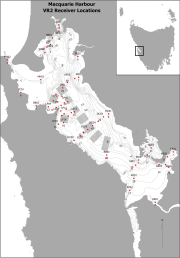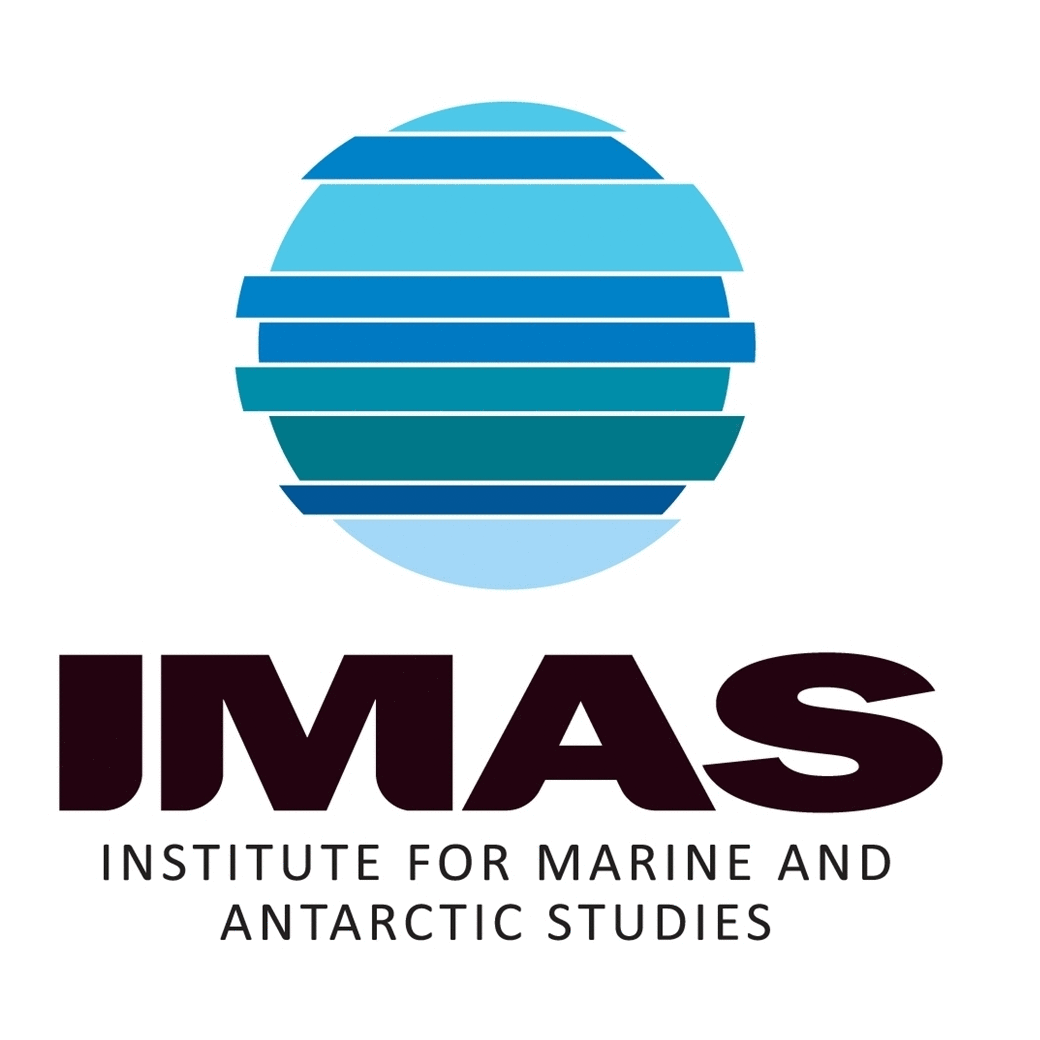2015
Type of resources
Topics
Keywords
Contact for the resource
Provided by
Years
-
This data presents the results of seabed mapping and habitat classification surveys completed in Darwin Harbour during 2011 and 2013 as part of the Northern Territory Government's marine habitat mapping program. This research is a collaboration between Geoscience Australia (GA), the Australian Institute of Marine Science (AIMS), the Department of Land Resource Management (DLRM) and the Darwin Port Corporation. Key objectives are to: - Produce detailed maps of the bathymetry and derived parameters such as slope and rugosity, - Classify the seabed into areas of hard and soft substrate, and, - Produce seabed habitat maps (or seascapes). Key outcomes from the surveys include: 1. Improved understanding of the seabed of Darwin Harbour. The main seabed geomorphic features identified in Darwin Harbour include banks, ridges, plains and scarps, and a deep central channel that divides into smaller and shallower channels. Acoustically hard substrates are found mostly on banks and are associated with rocky reef and sponge gardens, and are often overlain by a thin veneer of sandy sediment. In contrast, plains and channels are characterised by acoustically soft substrates and are associated with fine sediments (mud and sand). 2. Classification of physical seabed properties to produce a Seascape Map for Darwin Harbour. Six seascape classes (potential habitats) were derived using an Iterative Self Organising (ISO) unsupervised classification scheme. These six classes are related to statistically unique combinations of seabed substrate, relief, bedform and presence of sediment veneer (quite often inferred from presence of epibenthic biota).
-
The data is the quantitative abundance of fish derived from underwater visual census methods involving transect counts at rocky reef sites around Tasmania. This data forms part of a larger dataset that also surveyed megafaunal invertebrate abundance and algal cover for the area. The aggregated dataset allows examination of changes in Tasmanian shallow reef floral and faunal communities over a decadal scale - initial surveys were conducted in 1992-1995, and again at the same sites in 2006-2007. There are plans for ongoing surveys. An additional component was added in the latter study - a boat ramp study looking at the proximity of boat ramps and their effects of fishing. We analysed underwater visual census data on fishes and macroinvertebrates (abalone and rock lobsters) at 133 shallow rocky reef sites around Tasmania that ranged from 0.6 - 131 km from the nearest boat ramp. These sites were not all the same as those used for the comparison of 1994 and 2006 reef communities. The subset of 133 sites examined in this component consisted of only those sites that were characterized by the two major algal (kelp) types (laminarian or fucoid dominated). Sites with atypical algal assemblages were omitted from the 196 sites surveyed in 2006. This study aimed to examine reef community data for changes at the community level, changes in species richness and introduced species populations, and changes that may have resulted from ocean warming and fishing. The methods are described in detail in Edgar and Barrett (1997). Primarily the data are derived from transects at 5 m depth and/or 10 m depth at each site surveyed. The underwater visual census (UVC) methodology used to survey rocky reef communities was designed to maximise detection of (i) changes in population numbers and size-structure (ii) cascading ecosystem effects associated with disturbances such as fishing, (iii) long term change and variability in reef assemblages.
-
Water quality and biological data was collected from four tide-dominated river estuaries indicative of catchments with varying levels of human impacts to: 1) assess draft indicator levels for water quality, and 2) investigate biological indicators of estuarine health in NW Tasmania. This data includes sampling from Detention River, Duck Bay, Montagu River and Black River
-
The data is the percent algal cover derived from underwater visual census methods involving transect counts at rocky reef sites around Tasmania. This data forms part of a larger dataset that also surveyed fish and megafaunal invertebrate abundance for the area. The aggregated dataset allows examination of changes in Tasmanian shallow reef floral and faunal communities over a decadal scale - initial surveys were conducted in 1992-1995, and again at the same sites in 2006-2007. There are plans for ongoing surveys. An additional component was added in the latter study - a boat ramp study looking at the proximity of boat ramps and their effects of fishing. We analysed underwater visual census data on fishes and macroinvertebrates (abalone and rock lobsters) at 133 shallow rocky reef sites around Tasmania that ranged from 0.6 - 131 km from the nearest boat ramp. These sites were not all the same as those used for the comparison of 1994 and 2006 reef communities. The subset of 133 sites examined in this component consisted of only those sites that were characterized by the two major algal (kelp) types (laminarian or fucoid dominated). Sites with atypical algal assemblages were omitted from the 196 sites surveyed in 2006. This study aimed to examine reef community data for changes at the community level, changes in species richness and introduced species populations, and changes that may have resulted from ocean warming and fishing. The methods are described in detail in Edgar and Barrett (1997). Primarily the data are derived from transects at 5 m depth and/or 10 m depth at each site surveyed. The underwater visual census (UVC) methodology used to survey rocky reef communities was designed to maximise detection of (i) changes in population numbers and size-structure (ii) cascading ecosystem effects associated with disturbances such as fishing, (iii) long term change and variability in reef assemblages.
-
This repository contains data files (netCDF format) related to the model configuration developed and used by Joan Llort between 2011 and 2019. The model is a 1D configuration based on PISCES v1 and the specific routines and namelist are here: https://github.com/jllort/PISCESv1_1D The data in this repository is organised in two groups: - The first group contains the forcing files used to create and idealised representation of Southern Ocean water columns. Forcing files were automatically modified to force PISCES models with different mixed layer depth and iron environments. The files presented here are for a single water column but they can be modified using the python routines in the GitHub link above. - The second group contains the outputs for one of the experiments. We studied the impact of changes in ferricilne, winter mixed layer and summer mixed layer depths over Southern Ocean primary production.
-

Fixed position oxygen and water temperature logger data from the Macquarie Harbour World Heritage Area (WHA). Two Hobo oxygen data loggers are positioned at approximately 15 m depth at different sites within the WHA, with the intent of monitoring representative mid-bottom water oxygen values in the WHA as these were identified in previous studies to be naturally low due to limited seawater exchange at the harbour entrance, and thus likely to be most susceptible to anthropogenic factors that may increase oxygen demand and alter WHA conservation values. These values include core habitat of the Maugean Skate, a listed threatened species. This work is funded by WHA advisory board via the Nature Conservation Branch of DPIPWE and is part of a larger study being conducted by IMAS undertaking a biological baseline study of the biodiversity of the Macquarie Harbour WHA. This data spans 08/11/14 to present (most recent update 02/02/17).
-
The ETAS (Eastern TASmania) model is a high-resolution (~2 km in the horizontal) ocean model for eastern Tasmania, providing three-dimensional estimates of daily temperature, salinity, and circulation over the 1993-2014 period. This dataset consists of temperature, salinity, density, sea level, eastward (u) and northward (v) currents organised into timeseries files.
-
The ETAS (Eastern TASmania) model is a high-resolution (~2 km in the horizontal) ocean model for eastern Tasmania, providing three-dimensional estimates of daily temperature, salinity, and circulation over the 1993-2014 period. This dataset consists of eastward (u) and northward (v) currents organised into yearly files.
-
The ETAS (Eastern TASmania) model is a high-resolution (~2 km in the horizontal) ocean model for eastern Tasmania, providing three-dimensional estimates of daily temperature, salinity, and circulation over the 1993-2014 period. This dataset consists of temperature, salinity, along- and cross-shore currents, density and sea level organised into yearly files.
-
The data is quantitative abundance of fish and megafaunal invertebrates and algal % cover derived from transect based counts at a wide range of locations across Temperate Australia. The methods are described in detail in Edgar and Barrett (1997). Primarily the data are derived from transects at 5 m depth and/or 10 m depth at each site surveyed. Methods were initially developed for research on temporal changes following protection in Tasmanian long-term MPAs (Maria Is, Tinderbox, Ninepin Point, Governor Island). These data are temporally replicated (year scale).
 IMAS Metadata Catalogue
IMAS Metadata Catalogue